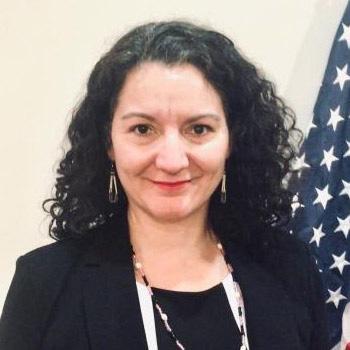NATI ONAL TASK F ORC E T O A D D R E S S ‘ C O L D C AS E S’ : LON G OV ERDUE IN CANADA? when they did the closing ceremony” and there had been no movement in the investigation, he said in an interview. “I had really high hopes and I was really counting on them.” Some of the cases of murdered and missing women in Canada have gone cold because there were no more leads for police to follow. And some were abandoned by law enforcement because the investigators were not convinced that a crime had been committed. In both situations, families are left not knowing what happened to their loved ones. And some are left searching alone. Carolyn Bennett, the federal Minister of Crown-Indigenous Relations, has said such a task force—one that would oversee all the police forces in the country—would be difficult to set up.
MICHELLE SAUVE ACTING COMMISSIONER, A D M I N I S T R AT I O N F O R N AT I V E A M E R I C A N S ( A N A )
The National Inquiry into Missing and Murdered Indigenous Women and Girls (MMIWG), which examined why so many Indigenous women and girls go missing in Canada, left the families of many victims feeling hollow. Despite 231 Calls for Justice and a report of more than 1,000 pages, the questions about what happened to their loved ones have gone unanswered. The Inquiry commissioners recognized the shortcomings of their mandate, which required them to explore the root causes of the crimes but did not include the reopening of cold cases. Halfway through their work, they issued an interim report calling for the federal government to set up a national police task force to look at why some investigations were mysteriously halted or why promising leads were not followed. That was reiterated in the Inquiry’s Calls for Justice, which demanded that the government establish an independent, highly qualified, and specialized team of investigators, to review and, if required, to re-examine each unresolved case of missing and murdered Indigenous women, girls, and 2SLGBTQQIA people across Canada. But, so far, no such investigative body has been established. Silas Blackned’s mother, Rose-Ann, was killed on November 16, 1991, when she was 24 years old. Her frozen body was found nine days after she was last seen alive in Val d’Or, Que. Mr. Blackned said the creation of a national task force to look at cases that have gone cold would be welcomed by families of the victims. The Quebec provincial police have never laid charges against the people who beat her and then allowed her to freeze to death, he said. Like other family members, Mr. Blackned said he hoped that the Inquiry would bring some resolution. “But it broke my heart
Meanwhile, the same sorts of questions that are being asked by the families of missing and murdered Indigenous women in Canada are also being asked in the United States. And while the U.S. has not held its own inquiry, task forces are being created across that country to look into the crimes, determine the factors that allow them to happen, and find solutions. Michelle Sauve, Acting Commissioner for the Administration for Native Americans and a member of the presidential task force Operation Lady Justice, told the International Summit of the Americas on Violence Against Indigenous Women that the issue needs collective action from all levels. “For many years the crisis of missing and murdered Indigenous women and girls in the United States was invisible to the general public, even though it was a known issue to many Native peoples,” said Ms. Sauve, who is Mohawk. Just as in Canada, she said, Indigenous activists in the United States spent years arguing that the numbers of murdered and missing Indigenous women, girls, and gender-diverse people are being under-reported, and that there is a lack of investigative urgency when Native women or girls were reported missing or were murdered. A witness once told the National Congress of American Indians that Alaska state troopers are faster to respond to the rural villages if they hear someone has hunted out of season than if they are notified about a missing person, Ms. Sauve told the Summit. “This perception that an Alaskan Native life was worth less than game was deeply traumatizing to the community.” The presidential task force on which she sits was struck in 2019 to address the concerns of American Indian and Alaskan Native communities regarding missing and murdered people, particularly missing and murdered Indigenous women and girls. Its scope is wide-ranging, she said, and includes the development of model protocols and procedures to apply to new and unsolved cases of missing and murdered persons within American Indian and Alaskan Native communities. Seven “cool case” offices have been opened within the Bureau of Indian Affairs, said Ms. Sauve. In an effort to solve cases before they go cold, the Department of (Continued on page 13)
KCI-NIWESQ • NWAC
12








